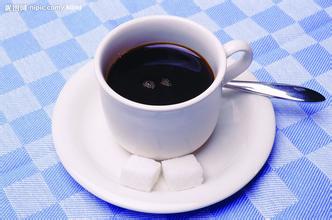Colombia Na Linglong Coffee Flavor Description Grinding Characteristics Treatment Variety Introduction
Colombia, located in the northwest of South America, is a beautiful country with a long history. Indians have lived on this land since ancient times. It became a Spanish colony in 1531 AD and gained independence in 1819. It was renamed in 1886 to commemorate Columbus, the discoverer of the American continent. Colombia, beautiful mountains, beautiful scenery, pleasant climate, four seasons such as spring, fresh air. Colombia is rich in products, especially coffee, flowers, gold and emeralds known as the "four treasures." Today the country is the second largest coffee producer after Brazil, the world's largest exporter of Arabica coffee beans and the world's largest exporter of washed coffee beans. Colombia coffee is often described as having a silky, smooth taste, the best balance of all coffees, soft, smooth, ready to drink, and it has won praise that no other coffee can match: known as "green gold," Colombia coffee varieties are mainly small coffee. Plants are small trees or large shrubs, 5-8 meters high, usually multi-branched at the base; old branches are gray, nodes expand, young branches glabrous, compressed. Leaves thinly leathery, ovate-lanceolate or lanceolate, 6-14 cm long, 3.5-5 cm wide, apex long acuminate, acuminate 10-15 mm long, base cuneate or slightly obtuse, rarely rounded, entire or shallowly undulate, glabrous on both surfaces, with or without pits in axils of lower veins; midvein raised on both surfaces of leaf blade, lateral veins 7-13 on each side; petiole 8-15 mm long; Stipules broadly triangular, born at the top of the young branches conical long pointed or awned tip, born at the top of the old branches are often pointed, long 3-6 mm. Cymes several clustered in leaf axils, each inflorescence 2-5 flowers, without pedicel or with very short pedicel; flowers aromatic, pedicels 0.5-1 mm long; bracts more or less united at base, dimorphic, 2 broadly triangular, nearly equal in length and width, 2 lanceolate, 2 times as wide, foliaceous; calyx tubular, 2.5-3 mm long, calyx limb truncated or 5 denticulate; Corolla white, length varies with species, generally 10-18 mm long, apically often 5-lobed, rarely 4-or 6-lobed, lobes often longer than corolla tube, apically often obtuse; anthers protruding beyond corolla tube, 6-8 mm long; styles 12-14 mm long, stigmas 2-lobed, 3-4 mm long. Berry broadly elliptic when ripe, red, 12-16 mm long, 10-12 mm in diam., exocarp dural, mesocarp fleshy, sweet; seeds raised abaxially, ventral plane, longitudinally grooved, 8-10 mm long, 5-7 mm in diam. Flowering March-April
Colombia coffee is the first coffee produced in Medellin, both in terms of yield and texture. It is characterized by full coffee beans, rich nutrition, moderate acidity, good balance, rich aroma and soft and smooth taste. In addition to Medellin, Armenia and Manizales, the capitals of two neighboring provinces in the south, are also famous coffee-producing areas. They were originally part of the Antichio province where Medellin is located, and the latter has a Caldas football team that participated in the last generation of the Toyota Cup. These three places formed the world-famous "coffee belt"

Important Notice :
前街咖啡 FrontStreet Coffee has moved to new addredd:
FrontStreet Coffee Address: 315,Donghua East Road,GuangZhou
Tel:020 38364473
- Prev

Description of Flavor of Yunnan small Coffee Flavor Mountain introduction to the treatment method of manor production area
Although the environmental problems of coffee cultivation can reach the standard of hot areas, they are far away from the equator, evaporation, large-scale coffee cultivation in Yunnan is less than 1100m above sea level, the severe drought in Yunnan in recent years, and the frost period in the producing areas, and so on, all make coffee planting can not be guaranteed normally, which directly affects the quality of coffee production. As for other processing problems, not to mention the quality of farmers, tea
- Next

Introduction to the production area of grinding scale manor by describing the flavor of coffee beans on Mount Everest in El Salvador
The civil war in coffee varieties caused chaos and affected economic development, but ironically allowed coffee antiquities to be preserved, and the situation was so chaotic that coffee producers in El Salvador failed to catch up with the renewal of coffee varieties in Central and South America. El Salvador produces 100% Arabica coffee, of which 68% is Bourbon, Coffea arabica var. Bourbon), 29% Pa
Related
- Detailed explanation of Jadeite planting Land in Panamanian Jadeite Manor introduction to the grading system of Jadeite competitive bidding, Red bid, Green bid and Rose Summer
- Story of Coffee planting in Brenka region of Costa Rica Stonehenge Manor anaerobic heavy honey treatment of flavor mouth
- What's on the barrel of Blue Mountain Coffee beans?
- Can American coffee also pull flowers? How to use hot American style to pull out a good-looking pattern?
- Can you make a cold extract with coffee beans? What is the right proportion for cold-extracted coffee formula?
- Indonesian PWN Gold Mandrine Coffee Origin Features Flavor How to Chong? Mandolin coffee is American.
- A brief introduction to the flavor characteristics of Brazilian yellow bourbon coffee beans
- What is the effect of different water quality on the flavor of cold-extracted coffee? What kind of water is best for brewing coffee?
- Why do you think of Rose Summer whenever you mention Panamanian coffee?
- Introduction to the characteristics of authentic blue mountain coffee bean producing areas? What is the CIB Coffee Authority in Jamaica?

